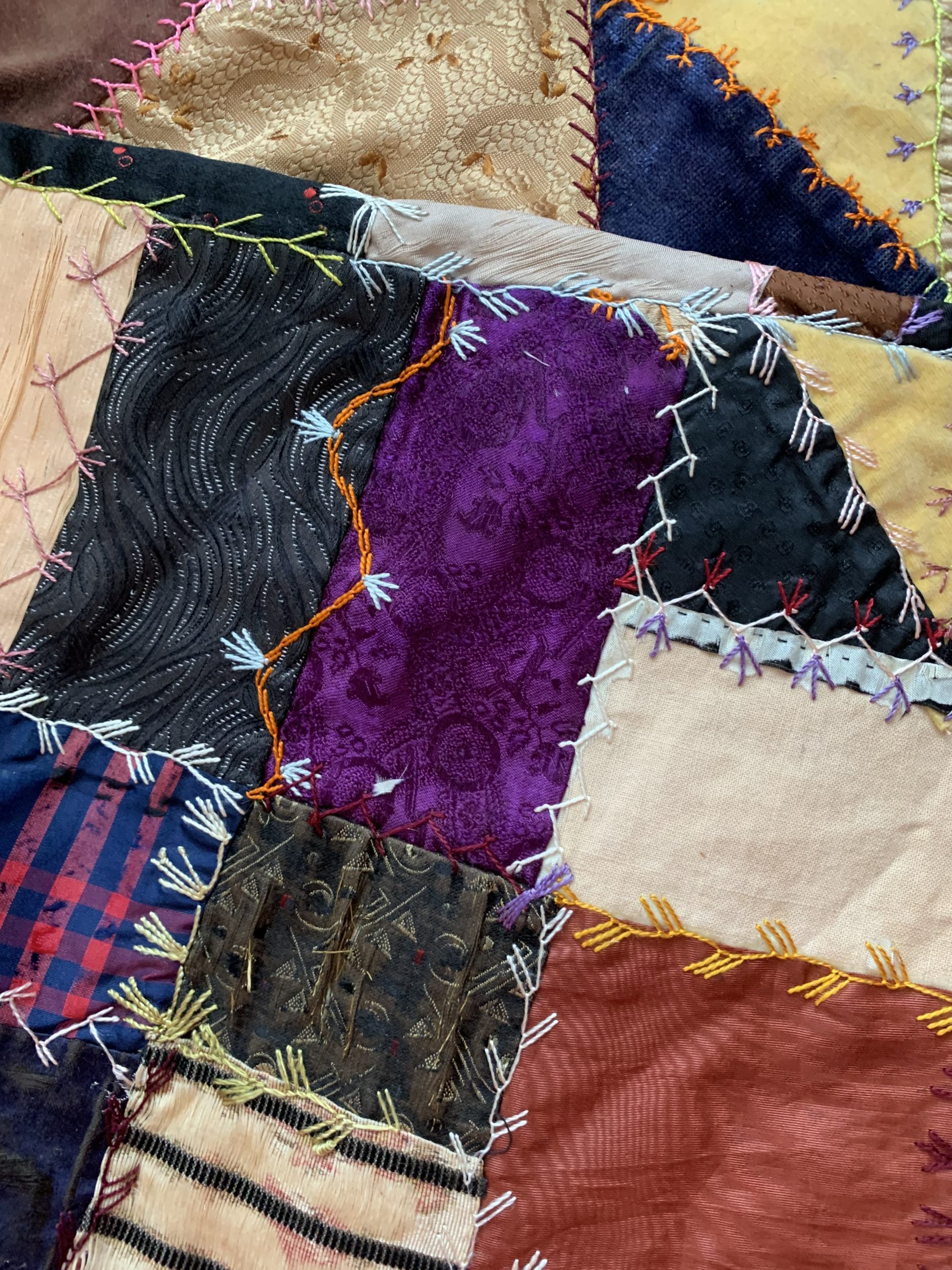Some information may be outdated.
This article is part of a series exploring items in the Moab Museum’s collection.
There are several colorful quilts in the Moab Museum’s Collection, each of which exemplifies the creativity and artistic diversity of the craft. Quilting has long been both a thriving, versatile form of art and a highly practical practice. Creating durable, warm quilts was a highly useful skill before factory-produced bedding was available, and it also became a way of making beautiful art. A diverse array of styles has evolved over generations, and all across the United States in both museums and peoples’ homes, many old quilts survive today as cherished keepsakes and connections to the past.

Historically, making quilts has long been a task and a creative form primarily undertaken by women. In the Moab Museum’s Collection, there are quilts that accompanied Moabites on their trips west to Utah from communities in the Eastern US. Some stayed in the same family for generations and bear signs of mending over the years. Others have unknown stories, inviting curiosity and eliciting wonder. Some of the quilts in the Collection have been hung on display, while others have been deemed too fragile to exhibit.
At recent Caring for Keepsakes workshops in 2022, Museum staff provided archival tips for Moabites interested in caring for their family’s old quilts at home. Instead of storing quilts in plastic bags or cardboard boxes, old quilts can be stored in an acid-free box and wrapped in a piece of washed, unbleached muslin. Quilts should be folded so the back side faces out, using as few folds as possible. In order to protect the folds from becoming permanent, crumple up acid-free paper and tuck it into the folds as a cushion, and if possible, re-fold the quilts every several months.
The Moab Museum is dedicated to sharing stories of the natural and human history of the Moab area. To explore more of Moab’s stories and artifacts, find out about upcoming programs, and become a Member, visit www.moabmuseum.org.
Appreciate the coverage? Help keep local news alive.
Chip in to support the Moab Sun News.





